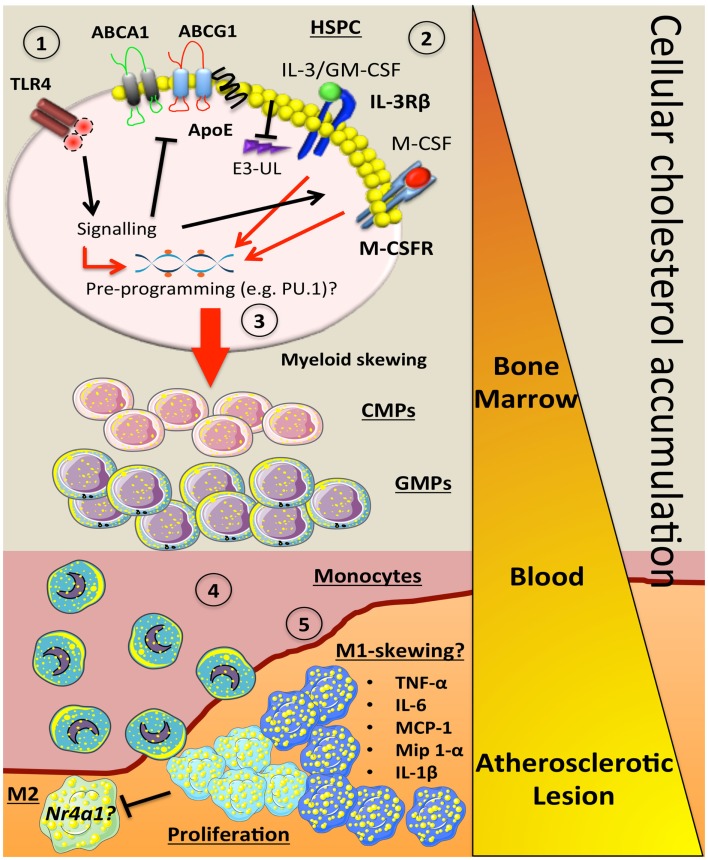Figure 1.
How alterations in cholesterol metabolism and myeloid skewing contribute to atherosclerosis. In the setting of hypercholesterolemia, inflammatory signals could be sensed by receptors such as TLR4 on HSPCs to trigger a number of downstream signaling events. This could (1) inhibit key cholesterol efflux pathways (ABCA1, ABCG1, ApoE), which would result in cellular accumulation. The increase in membrane cholesterol could lead to (2) increased cell surface expression of cytokine receptors such as IL-3Rβ and the M-CSFR due to a failure to activate E3-ubiquitin ligases (E3-UL). (3) Sustained signaling from myeloid cytokines (IL-3, GM-CSF, M-CSF) along with the hypercholesterolemic environment could pre-program the HSPC via PU.1 to produce more myeloid cells. As these cells mature in to CMPs and GMPs, they have the potential to carry more cellular cholesterol if their cholesterol efflux pathways are suppressed. (4) Once the blood monocyte is circulating, more lipid is acquired and it can carry this into the atherosclerotic plaque. (5) These lipid-laden monocytes could then differentiate into an M1-like macrophage that can also undergo local proliferation, which enhance inflammation by producing a number of cytokines and chemokines. These M-1 cells may also have a defect in Nr4a1 and lack the ability to convert into M-2 resolving macrophages. Triangle indicates cellular cholesterol accumulation as the myeloid cells mature (orange to yellow).

